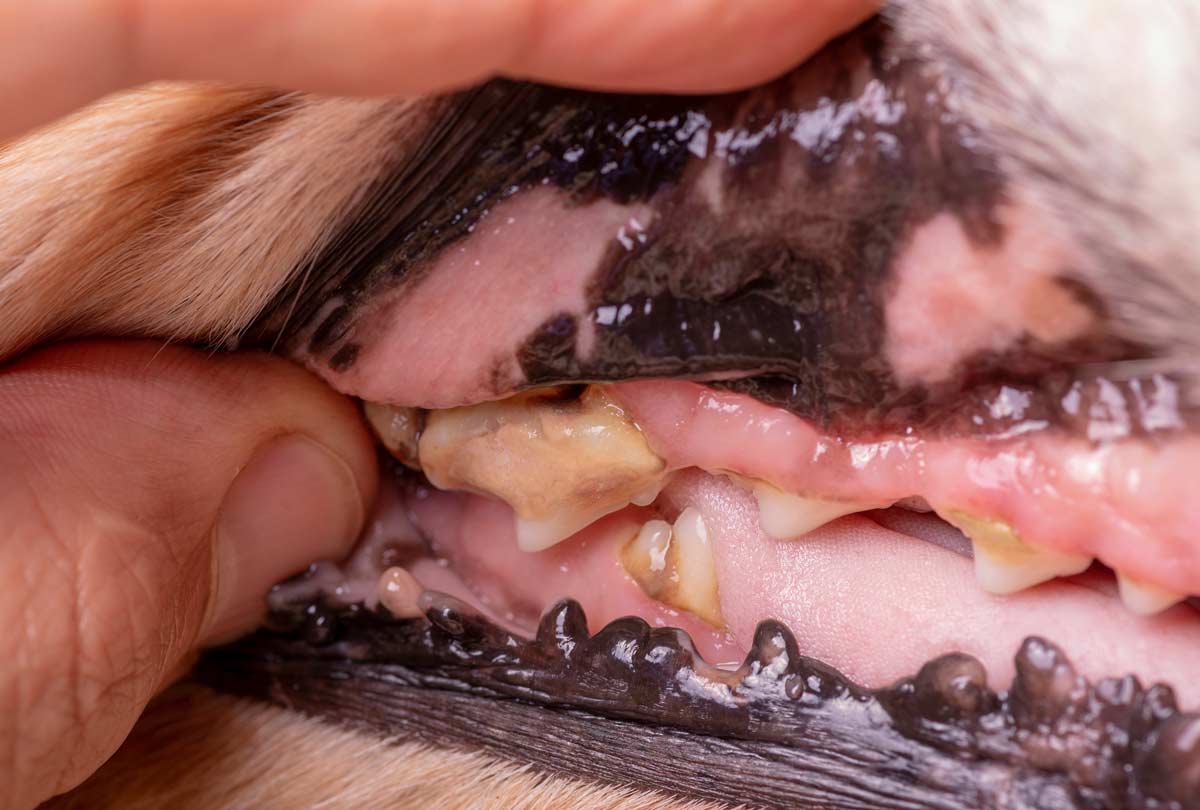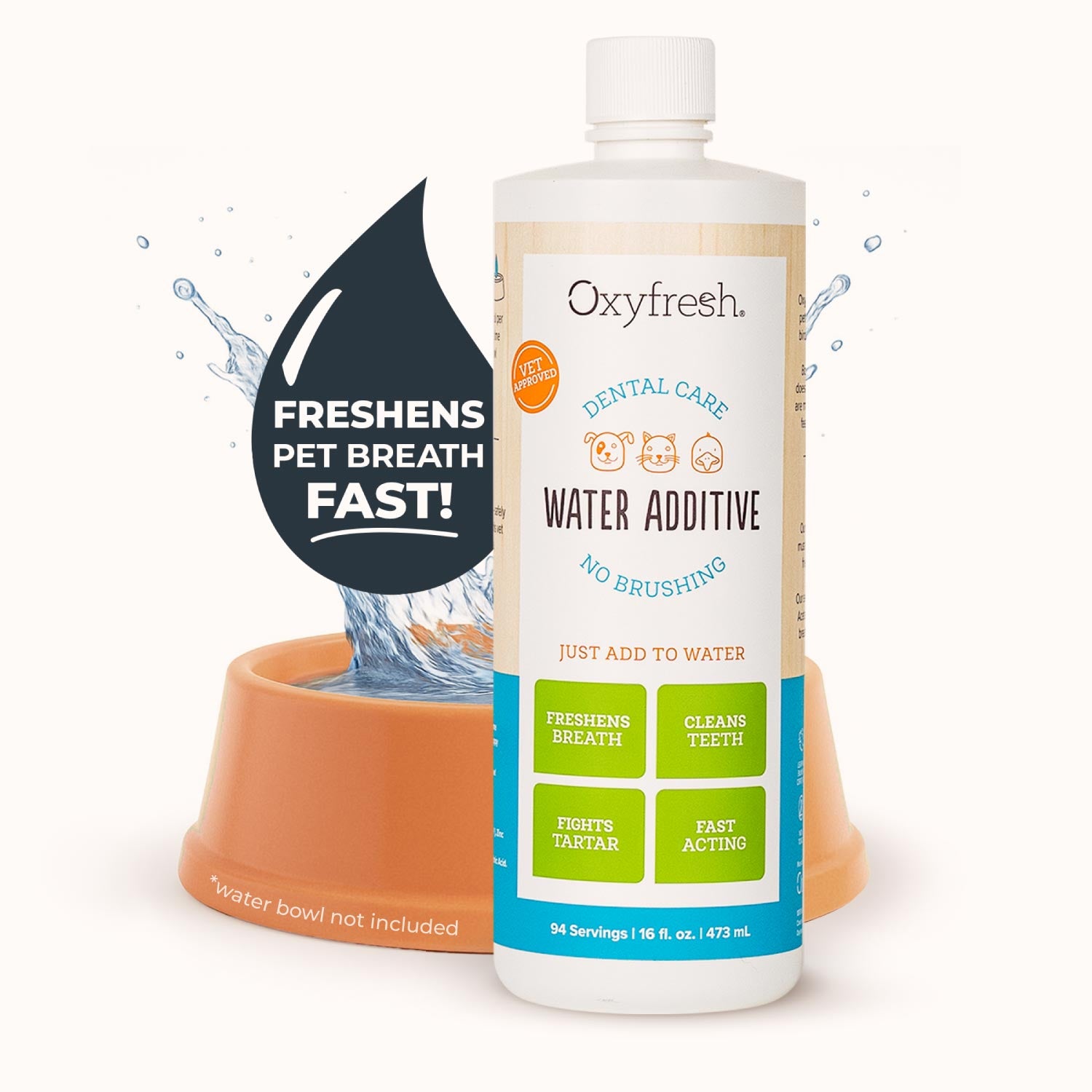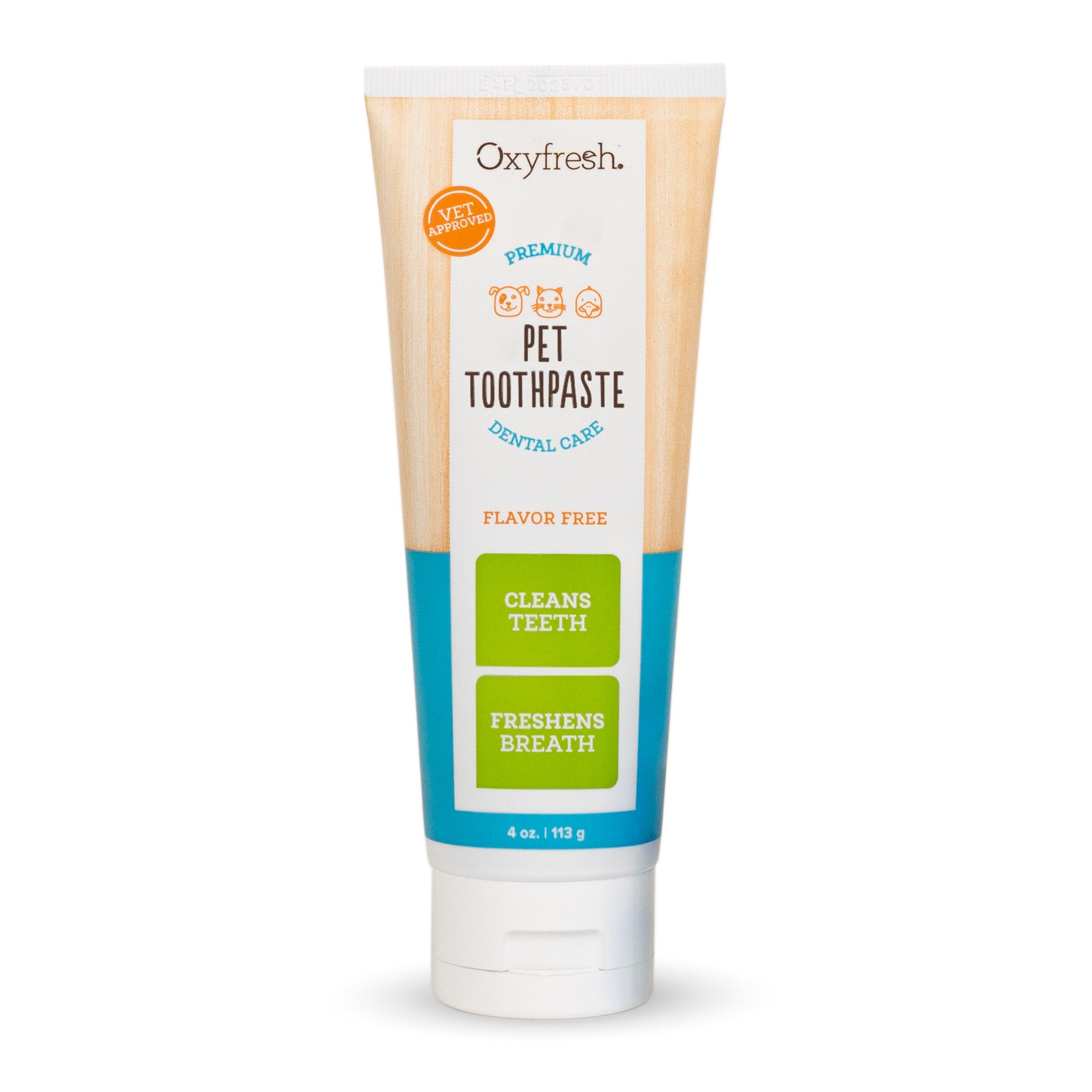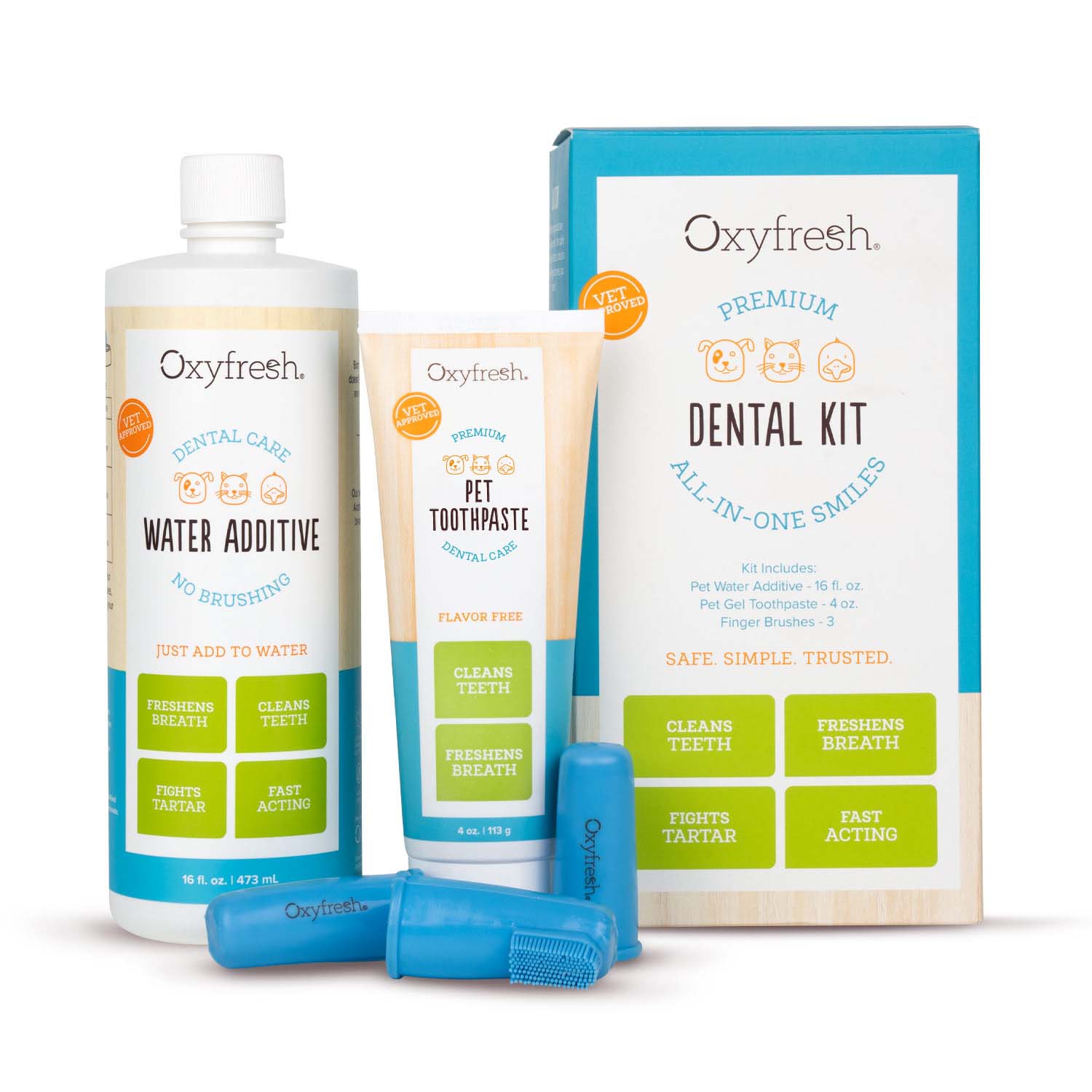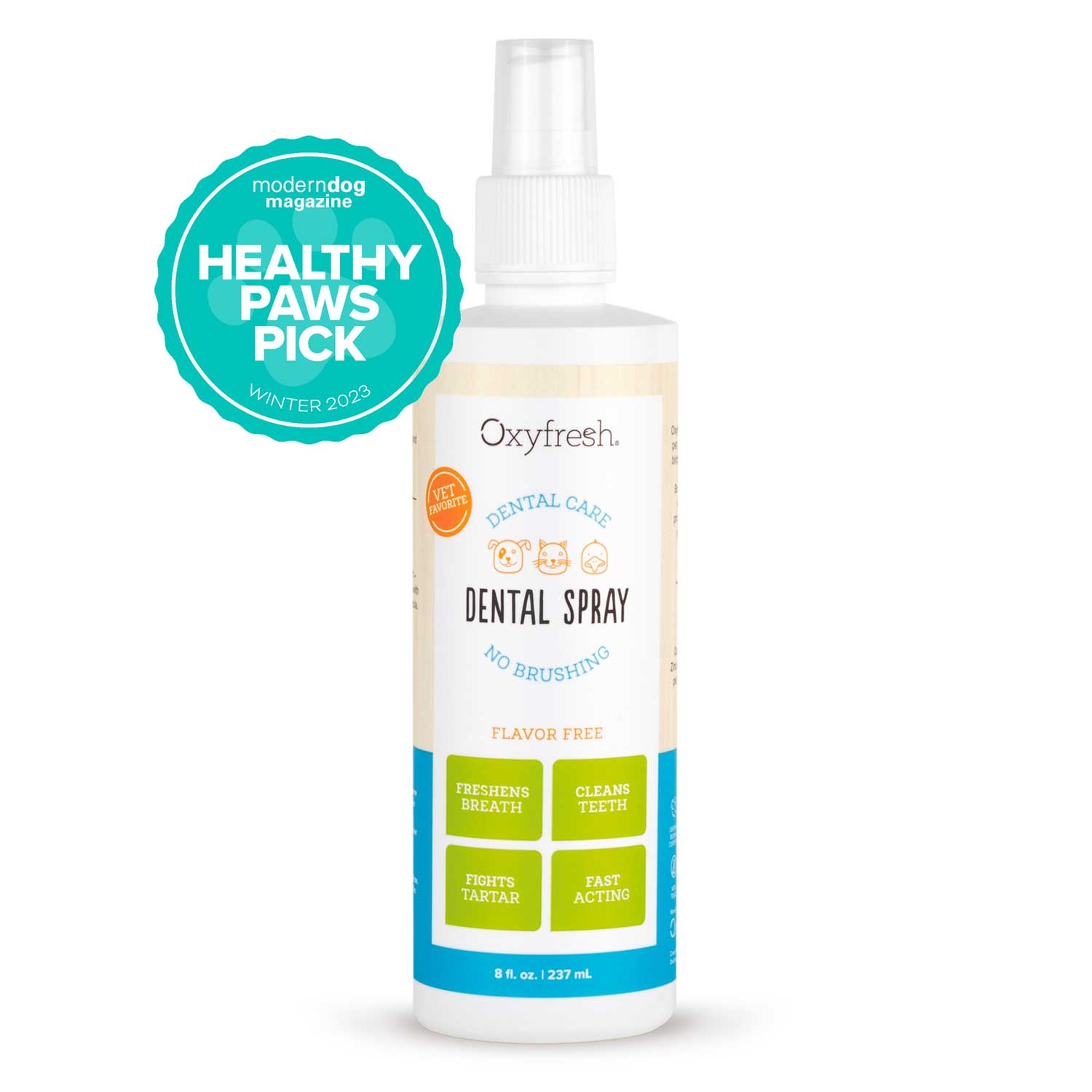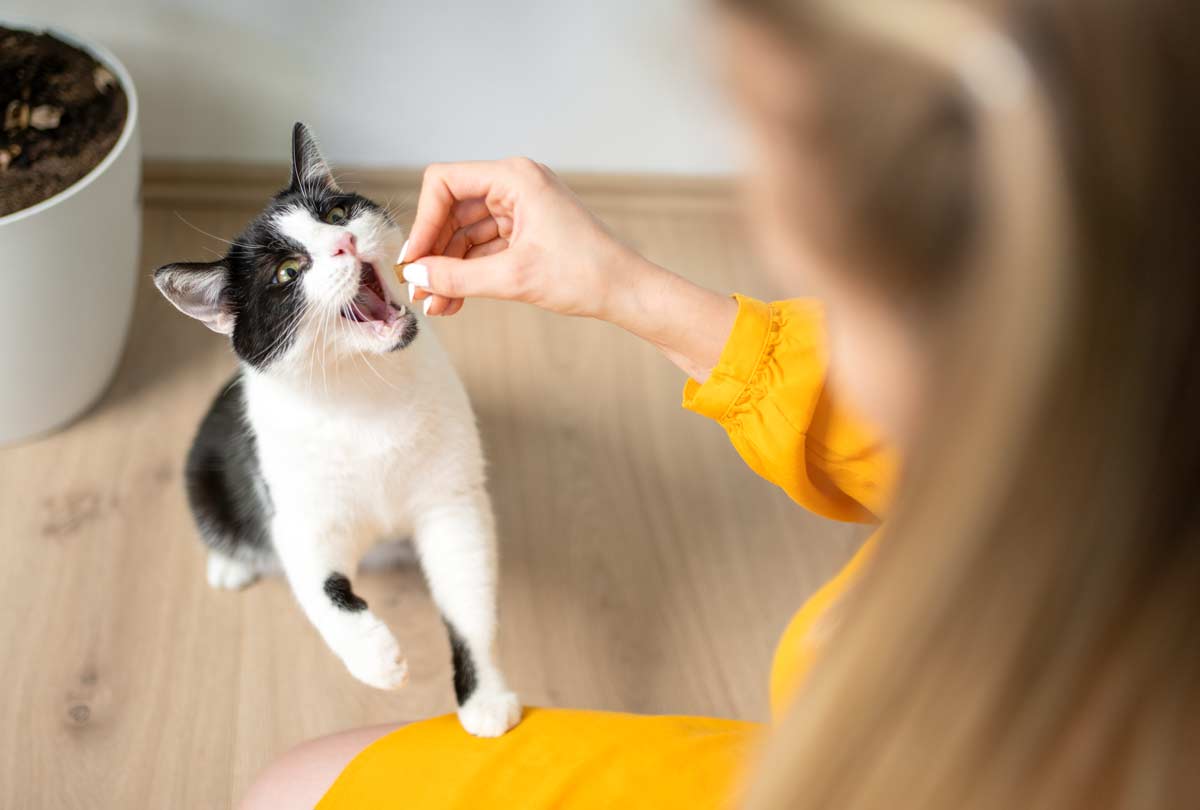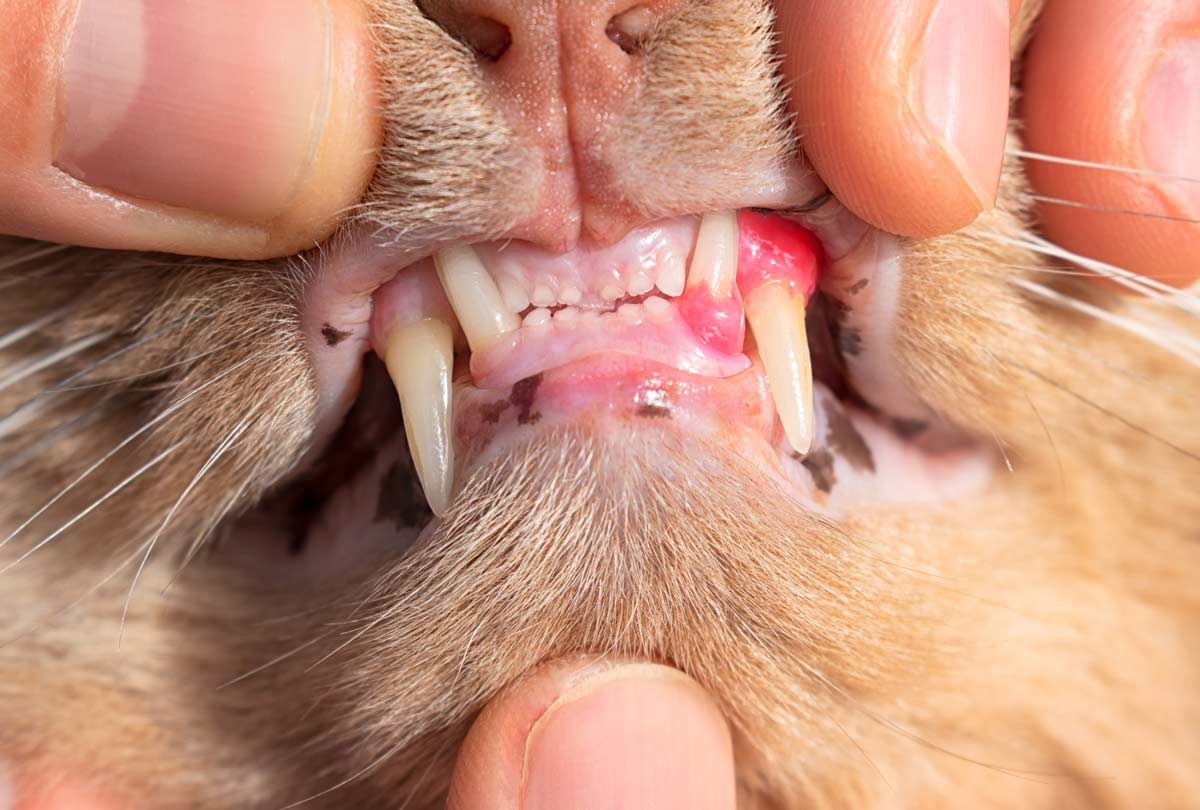Look at your sweet doggie ... cutest face ever, right? But what about their smile? Are you noticing (gulp!) yellow dog teeth?
Many dog parents wonder if yellowing of the teeth is normal or if it's a sign of unhealthy dog teeth. Rather than chase your tail, keep reading for everything you need to know about the causes of yellow teeth in dogs.
What’s a Normal Color for Dog Teeth?
A healthy dog should have white- or cream-colored teeth. The exact color of your dog’s teeth can be influenced by the natural shade of their enamel, the thickness of their enamel, and the enamel’s translucency. Whatever the color of their adult teeth when they first erupted is the color they should stay. The teeth should be tightly hugged by their gum tissue, which should be a shiny, light-pink color (think bubblegum).
Any dog tooth that isn’t white or creamy is considered discolored and should be discussed with your vet. Many conditions that cause grey, brown or yellow dog teeth are accompanied by pain. Because dogs naturally hide pain, even the most doting dog parents often aren’t aware of a problem until it gets to be more serious and costly.
Are yellow dog teeth a normal part of aging?
Dog teeth and yellow stains aren’t necessarily a cause for panic. For instance, with older dogs, their teeth can naturally begin to yellow with age. That’s because their teeth have gotten a lot of use in their lives (chewing on food, toys, and your favorite pair of shoes!), which can wear away the enamel.
Enamel is the white, hard, outermost layer of a tooth. Just like a human tooth, underneath the enamel of a dog tooth is the dentin. Dentin is yellow in color. Dog teeth have a lot less enamel compared to a human tooth: 0.1– 1 mm. versus 2.5 mm for human teeth. Therefore, a dog’s teeth may naturally look more yellow with age because the dentin is exposed sooner.
What Causes Yellow Teeth in Dogs?
Dental health is a big deal for our sweet furballs. If their teeth are in poor shape, it can affect their ability to play and eat ... and if you have a food-motivated dog, you know this is one of their great joys in life! So if you notice yellow dog teeth, it’s a good idea to get your pet to the vet for a checkup, as it could be anything from basic staining to gum disease. While your vet can help you determine the exact cause of your pooch’s yellow teeth, here are the main causes:
Medications
An antibiotic called tetracycline, used to treat bacterial infections, can lead to permanent changes in a dog’s tooth color, as substances in the antibiotic attach to the calcium in the teeth. The result is dog teeth with yellow stains or sometimes brown stains. A female dog can also pass on yellow teeth to her pups if she received tetracycline while pregnant.
Enamel Hypoplasia
This condition occurs when the outer layer of the enamel fails to develop properly. It can have a variety of causes, from tooth injury to poor nutrition, viral diseases (like distemper) to hereditary conditions. Keep in mind, if your dog has enamel hypoplasia, they’ll be more prone to plaque and tartar accumulation, which can also lead to yellow dog teeth.
Poor Oral Hygiene
If you notice your dog’s pearly whites becoming yellow, the most common culprit is plaque buildup on the teeth. Plaque is the starting point for unhealthy dog teeth and can lead to problems like tartar and gum disease.
Important: gum disease isn’t one of those rare conditions to brush off, thinking it won’t happen to your pet. The stark reality is that 8 in 10 dogs will have gum disease by age 3.
If your dog’s yellow teeth staining is uniform and smooth, there’s a good chance you’ve caught plaque in the early stage of gum disease. (There are four stages of periodontal disease in pets.) In this early stage, you can get rid of the plaque right at home without professional intervention ... aka an expensive dental cleaning! Fortunately, removing plaque from your dog’s teeth is easy if you can commit to a regular dental routine (more on that later).
But once plaque hardens into tartar (also called calculus), that’s when a pet’s smile can really go south. Tartar is darker yellow, brown, orange or black in color, and you’ll likely see reddening of the gums too. That’s because tartar is filled with harmful bacteria that work their way under the gum line, infecting them and eating away at a tooth’s supporting structures, leading to eventual tooth loss. Tartar buildup requires a professional dental cleaning under sedation, as it's too rock-hard to remove at home.
Signs of Gum Disease in Dogs
- Thick layer of tartar on dog teeth
- Bad dog breath
- Red inflamed gums
- Sensitivity to being touched around the mouth
- Excessive drooling
- Pawing at the mouth
- Difficulty eating
Can Bones & Treats Fix Unhealthy Dog Teeth?
Raw bones are a great way to fight plaque. They have natural enzymes to do the job and act as nature’s "floss" for the teeth. BUT ... chances are your dog isn’t gnawing a raw bone every day. And let’s be honest: raw bones can be MESSY! Plus, if your pooch already has unhealthy dog teeth from gum disease, bones can be too hard and cause tooth fractures. Same with chews and toys: make sure they are not too hard for your pet’s teeth. Bottom line: use dental chews, treats and raw bones as a supplement to a dental routine and not the sole way of caring for your dog’s teeth.
2 Ways to Care for Your Dog’s Teeth at Home
#1. Use a Dog Toothpaste
Brushing is the (white)gold standard for keeping dogs’ teeth clean and free of plaque. To give your pup the benefits, brushing your dog’s teeth should be done at least three times a week. Note: Be sure to use a dog toothpaste, as ingredients in human toothpaste can make pets sick.
Which dog toothpaste is the alpha dog? Vets, pets and pawsome dog parents like you are wild about Oxyfresh Pet Dental Gel Toothpaste. Only Oxyfresh dog toothpaste has Oxygene®, the proprietary, non-toxic purifier that eliminates the bacteria that cause plaque and bad dog breath on contact.
We’re talking molecular-level breath control here ... no coverups with fake meat flavors or mint, and no alcohol, harsh enzymes, or baking soda (blech!)! That way, your dog won’t run, wrestle you, or try to chew up the toothbrush ... or your finger!
Tips to make dog toothbrushing easier
- Apply the toothpaste to a finger brush ... it’s less stressful for dogs and easier to maneuver in the mouth than a toothbrush.
- Start out brushing for only a few seconds. You can increase your time each session as you (and your dog) get the hang of brushing.
- Focus on the outside tooth surfaces, especially along the gum line. This is where plaque and tartar accumulate.
- Brush after a long walk or play session so your dog will be calmer.
- Treat your dog after you brush (even if it didn’t go well) so your dog will develop a positive association with toothbrushing.
#2. Use a Dog Dental Water Additive
If you’re among the 93% of dog parents who aren’t brushing their dog’s teeth daily, don’t worry! You can still give your dog similar benefits, minus the hassle, with a dog dental water additive. It makes daily dog dental care a walk in the park: just add into your dog’s water bowl and you’re good to go!
Flavor free is the way to roll so your dog doesn’t turn his nose up at the water dish. Oxyfresh Dog Dental Water Additive is free of flavors, scents, and dyes, and formulated with proprietary Oxygene® to fight plaque, bad breath, and yellow dog teeth with every drink. Best of all, it works wonders at protecting doggie smiles from the perils of periodontal disease.
Psst... if you’re not sure whether using a dog toothpaste or a dog dental water additive would work best for your pet and your lifestyle, why not try ‘em both? Oxyfresh has a Try-Me-Size Pet Dental Kit that’s perfect for testing the waters. It includes everything you need to say goodbye to those yellow dog teeth:
- 3 oz. Dog Dental Water Additive
- 1 oz. Dog Toothpaste
- 3 silicone finger toothbrushes
Cheers to getting your dog on the path to a pearly white smile. C’mon, look at that face ... they’re so worth it!

